The Year – 2018 : Games
In a twist on The Week, to celebrate the end of the year I’m going to be making individual posts about the things that really stuck with me this year. These will be the things that I kept coming back to and kept thinking about and, if possible, kept diving into the hole it created in my wallet.
Of all the hobbies I’ve had through my life, the one constant––the only solid line from youth to adulthood––has been video games. I stopped reading comics for about fifteen years. I didn’t start playing guitar until adulthood. I didn’t start regularly reading for fun until I was 21. I even stopped drawing for about seven years. However, in every home, I have always had a video game console connected to my television––from the Nintendo Entertainment System through to my Playstation 4 today.
To that end, though, I was even a nerd among video game players. I liked the games that had stories and characters that changed by the end of the game. Instead of playing every Madden game I eagerly awaited any news on the new slowly-paced, menu-driven Final Fantasy game, having been a fan of the series since its day of release in 1990. Where some friends of mine wanted to play head-to-head matches of Street Fighter II or a shooter like Halo, I steered toward games where it was just me, a controller, and the tv.
And although my tastes have changed over time, I am always drawn to story and characters more than action or competition, and the games that really stuck with me this year evoke that fundamental draw.
–––––––––––––––––––––
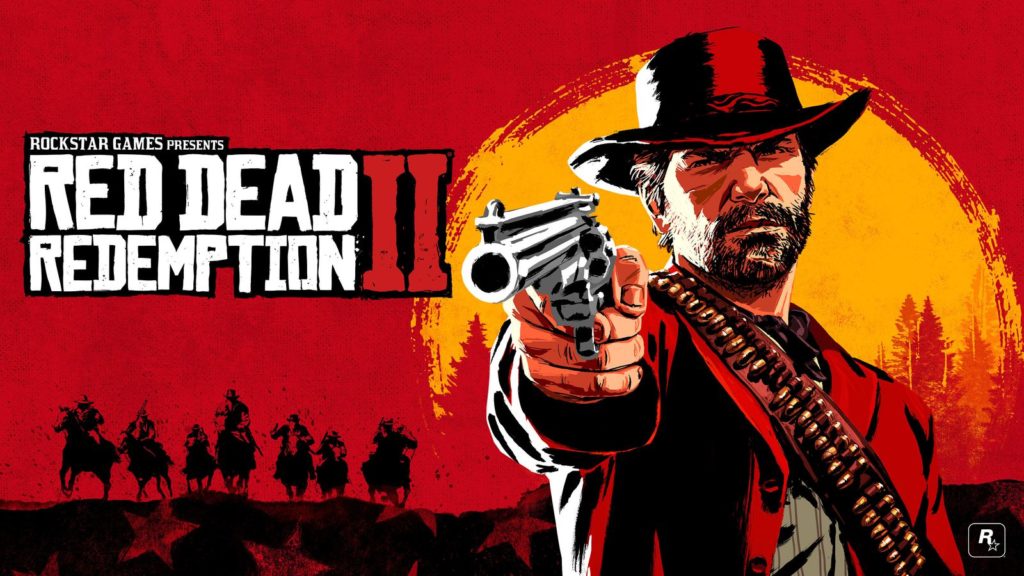
Red Dead Redemption 2
by Rockstar Games, played on Playstation 4
Red Dead Redemption 2 is a game I can’t recommend. Well, not to most people. It’s not the game most fans of Red Dead Redemption, Grand Theft Auto, or Rockstar Games wanted.
The joke about 2010’s Red Dead Redemption was that was basically just Grand Theft Equine, and though the story and characters were more optimistic, less cynical, and more thoughtful than anything in the GTA series, mechanically it wasn’t wrong. And as the most recent GTA is an iteration on what GTA has always done, it made sense that RDR2 would continue such evolution. What we didn’t expect was for one of the most profitable video game companies to spend millions of dollars (allegedly, RDR2 is the most expensive game ever made, and it shows) to make a weird art-house game about cowboys.
While continuing the tradition from its predecessor by being Rockstar’s strongest narrative, with the best characterizations and acting I’ve seen in any game, the humorously reductive name best applied in this case would be Cowboy Simulator. You actually have to ride your horse from place to place in real time. And you can’t just sprint the whole way because you could aggravate the horse or even harm it. You can’t just shoot everyone you see and steal their stuff because you’ll be reported to the law, making your time in town very difficult (but, I guess, doable). It’s a game that asks you to be your best cowboy, getting around to the story the developers want to tell whenever you can.
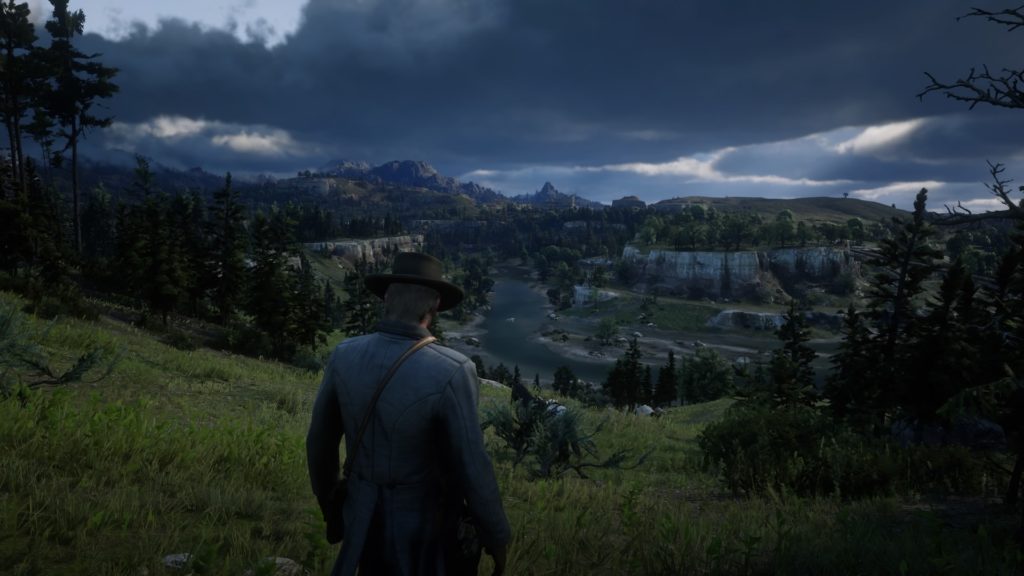
Rockstar Games is most well-known for its amoral Grand Theft Auto series, games I never played nor appreciated. However, I was a fan of an early Rockstar release on the Playstation 2 called Red Dead Revolver, an earnest western action game that traded on clichés but surprisingly held more heart than it needed to in its story and characters. So, when Red Dead Redemption was announced, it was like a game was being made for me, and the game itself certainly did not disappoint.
I expected Red Dead Redemption 2 to be what its predecessor was, but bigger. However, with its plethora of unconnected systems and severe repercussions to the choices you make, RDR 2 clearly wanted to smash the expectations it created with Red Dead Redemption as well as any of its ties to the GTA series.
While the story is gripping––the most sober and thoughtful Rockstar has ever done––it is interminable, especially toward the end as it tries a bit too hard to tie itself to the first RDR (of which it is actually a prequel), but I loved every minute in that world where I’m just doing my best to help the gang, using my skills slinging guns and riding the plains to the best of my ability.
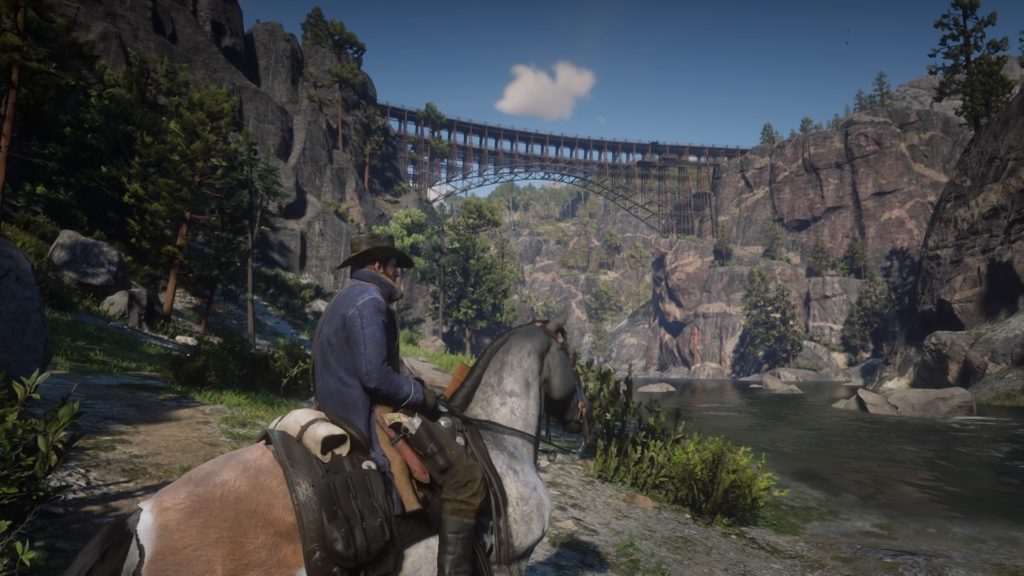
That, combined with playing as Arthur Morgan––the singularly most complex and believable main character I’ve ever seen in a video game––made me completely buy into this simulation despite the steep learning curve and deliberate pacing. I wanted to do my best not only in shootouts but also in surviving and maintaining the health of myself and my horse, to clean my guns every few (in-game) days, to stop and set up camp when lightning storms rolled in from the mountains, to put on warm clothes when heading into the snow, to find a nice cliff that overlooks the valley and just…look.
Quite simply, the experience wasn’t what I expected, but the experience it yielded––once I yielded to it––was absolutely sublime.
–––––––––––––––––––––
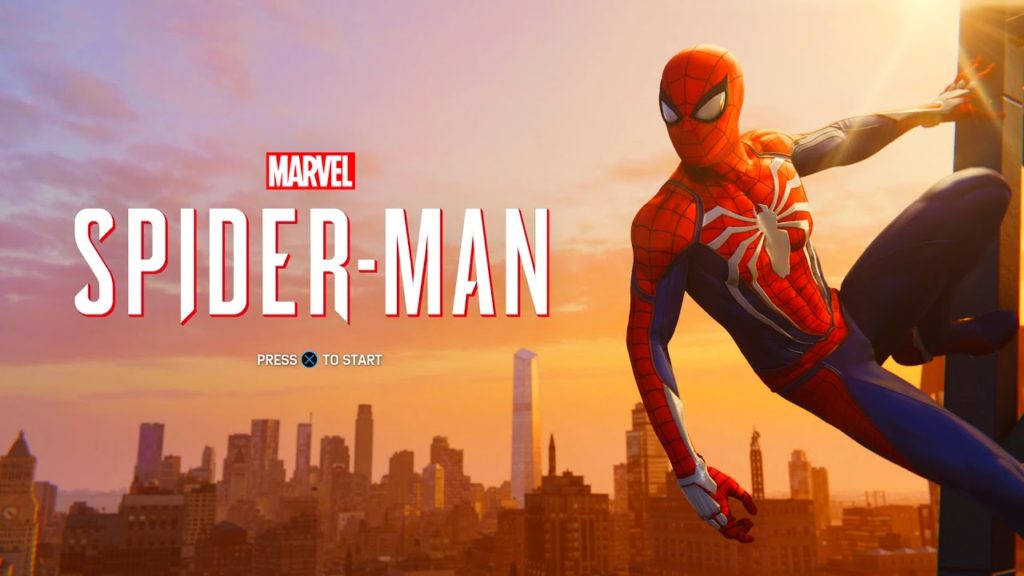
Marvel’s Spider-Man
by Insomniac Games, played on Playstation 4.
Something I came to grips with in 2018 was the fact that I have insomnia. While it sounds like I’m setting up a joke with the developer of this game, it actually has much more to do with why I played the heck out of Marvel’s Spider-Man (it’s official title). I didn’t think I had insomnia because I have no problem falling asleep––it’s staying asleep that is the issue. But when it became a more severe health problem this summer, it was the decision of medical professionals that insomnia was indeed my problem.
Apparently linked to my propensity toward anxiety, I can wake at any point and be unable to fall back asleep. Though I’m awake, I’m barely functional or productive since I usually awaken in some sort of panic with all my synapses firing in self-preservation.
During graduate school––when it all started––I would go downstairs and listen to podcasts and play games silently. The Rocksteady Arkham games became a port of solace for me because it let me be Batman and I fought crime during those midnight sessions. Though the last game in that series was released three years ago––and I had played through it in its entirety three times––I still went back to it as a panacea for my inability to sleep.
Until Marvel’s Spider-Man.
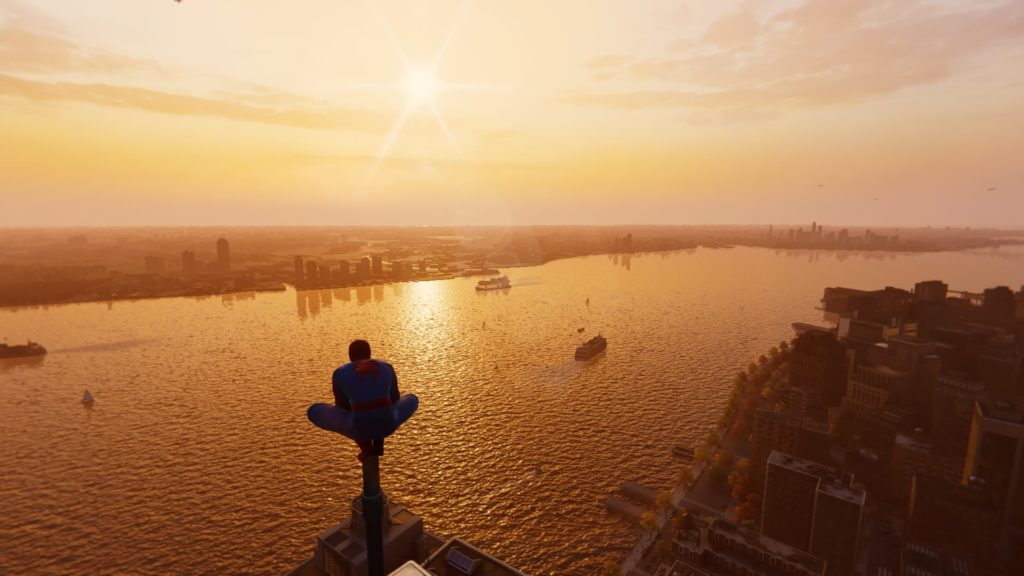
I have no affinity toward Spider-Man. His movies were always fun but I’ve never read an issue of his comic. However, this game is all about traversal––slinging webs through this recreation of New York City with ease and grace––and, big surprise, fighting crime. These descriptors equally apply to the Arkham games, but with cape-gliding instead of web-shooters.
This game pulls a lot more than just ethos from the Arkham series––much about the gameplay and design are straight from Rocksteady’s series––but where the Arkham games traded on grimdark stories, grotesque design, and the cover of night, Spider-Man is the complete inverse of the Arkham aesthetic. It is bright, it is relatable, it is optimistic.
I remember enjoying the story quite a bit––it is incredibly well-acted and the best Spider-Man story I’ve seen so far––but most of my time has been post-narrative, completing side-quests or just swinging around until I hear a dispatch from the NYPD about a carjacking or a standoff with local criminals or a drug deal going down in some back alley.
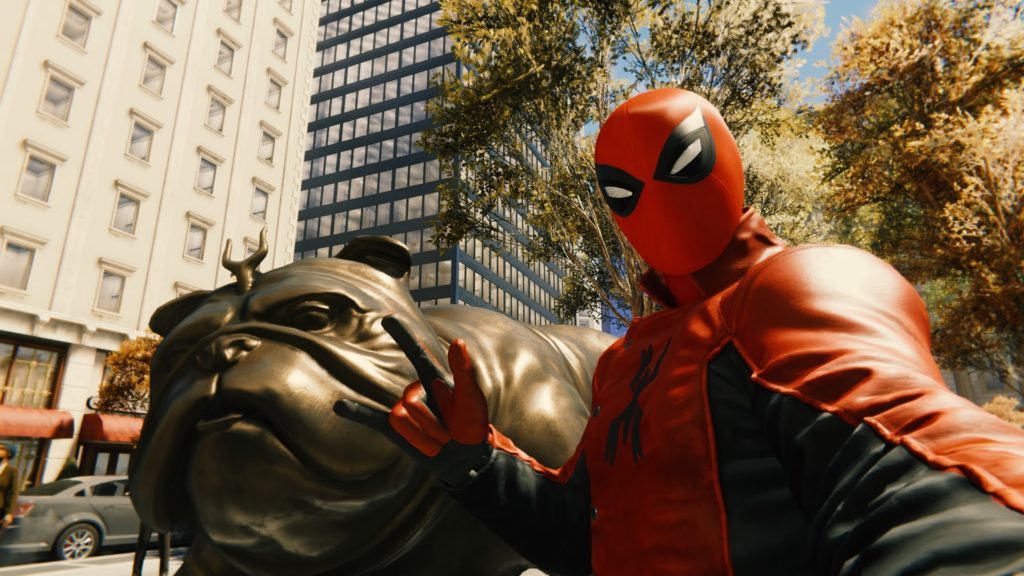
Those bursts of activity, accomplished with the expected light-hearted candor of this older but still idealistic webheadded hero, created a song-like pattern of verses (swinging through a major metropolitan city at my leisure) and choruses (responding to criminal activity) that continues to push me through the darkness of panic-soaked midnights and into the soft dawn of the early morning where I can actually do my best to contribute to society.
–––––––––––––––––––––
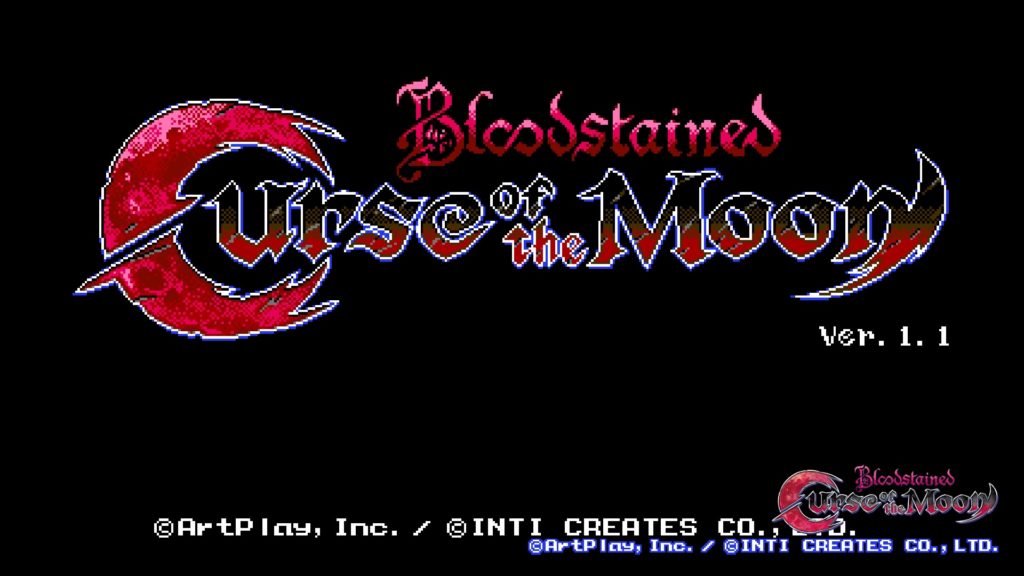
Bloodstained: Curse of the Moon
by Inti Creates, played on Playstation 4.
As mentioned earlier, I have been playing video games for a long time and, like many people in my age group, I have a nostalgia for the days of the Nintendo Entertainment System (NES) and its successor, the Super Nintendo Entertainment System (SNES), specifically.
Many games in those early NES days have a strong reputation among gamers for being difficult. Part of playing these games––games like Mega Man 2, Castlevania, Super Mario Bros. 3, Ninja Gaiden, for example––lay in memorization. Playing these games was to learn the layouts and patters of these intricately planned levels so you could not only jump to avoid an enemy you knew was coming, but to jump at exactly the right time so you could bounce off of it and, in the extra height you got off of that bounce, collect a power-up normally out of reach, and then land in time to execute a fatal blow to an unsuspecting enemy.
We look at those games fondly because we remember the ease we had after mastering their process, playing from muscle memory so that these games became performance rather than challenges.
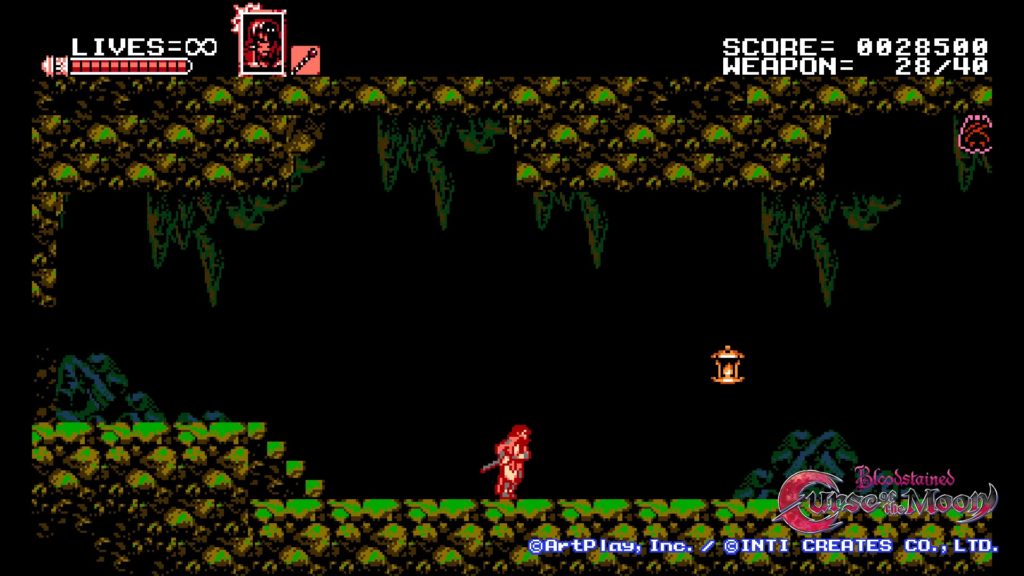
Bloodstained: Curse of the Moon had no right to be as complex and clever as it is, since it’s an afterthought for a larger, much more expensive and modern game that earned a lot of money through a Kickstarter campaign. The main, still unreleased Bloodstained game is the brainchild of Koji Igarashi, a former game designer for the Japanese developer Konami. Igarashi (or “Iga” as he’s come to be called) designed the seminal installment of the very long-lasting Castlevania series, Castlevania: Symphony of the Night, for the Playstation.
However, Curse of the Moon pulls from the NES Castlevania games, specifically the underappreciated and ambitious Castlevania 3: Dracula’s Curse, a game that pushed the hardware of the NES to impressive limits. Like Castlevania 3, Curse of the Moon lets you cycle through multiple characters that offer different play styles and quirks––and the levels are built to showcase those styles at points––which allows for multiple avenues through stages and encourages multiple playthroughs. Not to mention, you have choices you can make throughout the game that make successive playthroughs wholly different experiences.
Lovingly rendered in the 8-bit graphics of the NES, it evokes the hardware limitations of that system as well, despite developed for and playing on hardware that is more than capable of what the game is trying to do.
For me, this game came out of nowhere––an old school “Nintendo Hard” style (it can be very challenging) blended with modern sensibilities toward player choice and alternate paths through the same story (as well as accessibility; it allows you to lower the difficulty without any penalty to the player)––and I wanted to probe every nook this game hid. I think I played through it about four or five times before walking away, but its inviting challenge, devoted aesthetic, and playful structure stuck with me as much as any of the big money, narrative-heavy, time-consuming games I also played this year.
–––––––––––––––––––––
An interesting thing about my trend away from more linear, narrative-focused console role-playing games (RPGs) like the aforementioned Final Fantasy series is that my tendencies have actually steered toward the more mundane. Apparently, my power fantasy is to be someone who is, ostensibly, just doing their job and I get enjoyment from doing that job well. From the space opera of Bioware’s Mass Effect series or Batman stopping crime in Rocksteady’s Arkham series to the incredibly problematic raiding of tombs in the new Tomb Raider series, with the addition of the fun traversal in Marvel’s Spider-Man and the depth of character and choice found in Red Dead Redemption 2, I come to love these games that––through the thrust of immediate high-stakes danger––just asks you to do your job.

Discussion (2) ¬